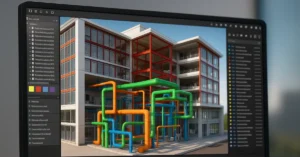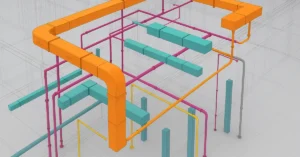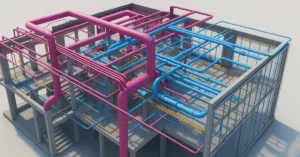Explore the hidden gems of Brutalist Buildings in Kyoto, blending concrete beauty with cultural contrast
Kyoto, Japan’s historic cultural capital, is renowned for its ancient temples, wooden machiya houses, and serene gardens. Yet amidst its timeless beauty lies a contrasting narrative carved in concrete—Brutalist architecture. Often overlooked due to the city’s more traditional landmarks, the brutalist buildings in Kyoto represent a quiet but powerful chapter in its modern architectural journey.
This blog explores these hidden gems, revealing how Brutalism found its place in Kyoto. From academic institutions to cultural venues, discover how concrete took form in a city celebrated for its wood and paper.
The Emergence of Brutalism in Japan
Brutalism emerged in Japan in the post-war era, a time marked by rapid economic growth, reconstruction, and modernization. While Tokyo led the charge with experimental architecture, Kyoto—home to some of Japan’s leading universities and intellectual hubs—embraced Brutalism in more subdued but meaningful ways.
Japanese Brutalism, including in Kyoto, adopted a more refined and context-aware approach. It often fused raw materials with the nation’s traditional attention to craftsmanship and minimalism, resulting in buildings that felt monumental yet meditative.
Top Brutalist Buildings in Kyoto
1. Kyoto International Conference Center (KICC)
Location: Takaragaike, Sakyo-ku
Architect: Sachio Otani
Year: 1966
The Kyoto International Conference Center is a crown jewel of Brutalist architecture in the city. Designed by Sachio Otani, a disciple of Kenzo Tange, the building is a bold yet harmonious integration of concrete and landscape. Its angular geometry, cantilevered structures, and exposed raw materials stand in contrast to Kyoto’s natural surroundings. The building hosted the historic 1997 Kyoto Protocol talks, adding political weight to its architectural presence.
2. Kyoto Institute of Technology (KIT) – Library and Lecture Halls
Location: Matsugasaki, Sakyo-ku
Architects: Various (Modernist & Brutalist blend)
Years: 1960s–1970s
KIT’s campus features numerous buildings that echo Brutalist principles. The use of repetitive concrete frames, linear corridors, and exposed structural systems reflects the function-first philosophy of Brutalism. The library, in particular, stands as a quiet monument to post-war educational architecture, marrying utility with monolithic presence.
3. Kyoto City University of Arts (KCUA) Buildings
Location: Nishikyogoku, Ukyo-ku
Architects: Unknown (Modernist Period)
Years: 1970s
While plans are underway to relocate, KCUA’s current campus includes several Brutalist buildings that house studios and administrative offices. Characterized by exposed concrete, flat rooflines, and geometric forms, these structures represent how the arts and architecture intersect.
4. Kyoto University – Faculty of Engineering Building No. 1
Location: Yoshida, Sakyo-ku
Architect: Unknown
Year: 1970s
Kyoto University, one of Japan’s top academic institutions, features a number of utilitarian Brutalist buildings from the 1960s and 70s. The Faculty of Engineering Building No. 1 is among the most prominent, with its stark concrete exterior, deep-set windows, and columnar supports.
5. Rohm Theatre Kyoto (Formerly Kyoto Kaikan)
Location: Okazaki, Sakyo-ku
Architect: Kunio Maekawa
Original Year: 1960 (Renovated 2016)
Rohm Theatre Kyoto was originally designed by Kunio Maekawa, a pioneer of Japanese modernism who blended Brutalist ideals with local aesthetics. While the 2016 renovation softened some of its harsher elements, key features like cantilevered balconies, concrete beams, and its dramatic roofline remain.
6. Kyoto Municipal Museum of Art (Annex Wing)
Location: Okazaki Park, Sakyo-ku
Year: 1970s
Although the main museum showcases neoclassical design, the annex wing—a later addition—embraces Brutalist traits. Raw concrete, asymmetrical massing, and a heavy volumetric presence distinguish it from its older counterpart.
7. Kyoto Prefectural University Buildings
Location: Shimogamo, Sakyo-ku
Architects: Local firms
Year: Late 1960s to 1980s
This public university’s campus houses several Brutalist structures built during Japan’s educational expansion era. These include lecture halls, laboratories, and administrative buildings. The stark concrete exteriors and symmetrical forms make them iconic to students and faculty alike.
The Philosophy Behind Kyoto’s Brutalism
Unlike the overtly bold and sometimes aggressive Brutalism of Europe, Kyoto’s approach to the style is more introspective. Architects often integrated nature, light, and spatial openness into the design. This hybrid approach mirrors Kyoto’s broader cultural ethos—honoring tradition while embracing innovation.
Materials were used with intention. Concrete was not just poured but treated, textured, and shaped to suit specific aesthetic goals. The result is a gentler, more contemplative version of Brutalism, uniquely suited to the city’s identity.
Public Sentiment and Changing Perceptions
For years, these Brutalist structures were largely ignored, often considered unattractive or outdated. However, recent interest in mid-century architecture and modernist preservation has cast a new light on them. Instagram influencers, architecture students, and cultural commentators now highlight these buildings as aesthetic and historical landmarks.
Brutalist walking tours are becoming popular among niche groups, and books on Japanese modernism often feature Kyoto’s examples prominently. There is a growing sense that these buildings deserve the same cultural recognition as the city’s temples and shrines.
Preservation Efforts and Challenges
Some buildings, like the Rohm Theatre, have found second lives through renovation and adaptive reuse. However, others face demolition or unsympathetic remodeling. Preservationists argue that the uniqueness of these buildings lies in their original form, urging city officials and developers to consider heritage listings and sensitive restorations.
There’s also an environmental argument for preservation. Concrete, though energy-intensive to produce, represents a large carbon footprint already spent. Saving existing structures can be more sustainable than tearing down and rebuilding.
How to Explore Kyoto’s Brutalist Landscape
Visiting these buildings provides an alternative view of Kyoto—one that counters the city’s postcard image with a story of progress, academia, and artistic boldness. Ideal for architecture enthusiasts, photography lovers, and curious travelers, the following tips will enhance your brutalist exploration:
- Plan ahead: Some sites are on university campuses or are used for events; access may be limited.
- Combine with nearby attractions: For example, Rohm Theatre is near Heian Shrine, blending tradition and modernism in one visit.
- Look beyond the surface: Brutalism is best understood through its function, structure, and context.
Conclusion
Brutalist buildings in Kyoto offer a compelling counterpoint to its celebrated traditional aesthetic. They tell stories of a city balancing modernity and heritage, ambition and reflection. Often hidden in plain sight, these structures invite us to reconsider beauty, materiality, and purpose.
As Brutalism enjoys a global resurgence in appreciation, Kyoto’s unique contribution to the style deserves recognition and preservation. These concrete forms are more than just buildings—they are cultural artifacts, architectural experiments, and emblems of an evolving city.
So the next time you find yourself walking through Kyoto, look past the torii gates and Zen gardens. You might just discover a brutalist gem that redefines your view of this ancient yet forward-looking city.
If you’re interested in learning more about architecture firms in Europe, check out this comprehensive list of the top 50 firms compiled by Archgyan. From innovative startups to long-established industry leaders, this list has it all. Take a look and discover some of the most inspiring and influential architecture firms in Europe today.
If you’re interested in architecture and want to learn more about this amazing field, subscribe to our podcast on youtube
For more SketchUp tutorials, head to https://www.sketchupguru.com










